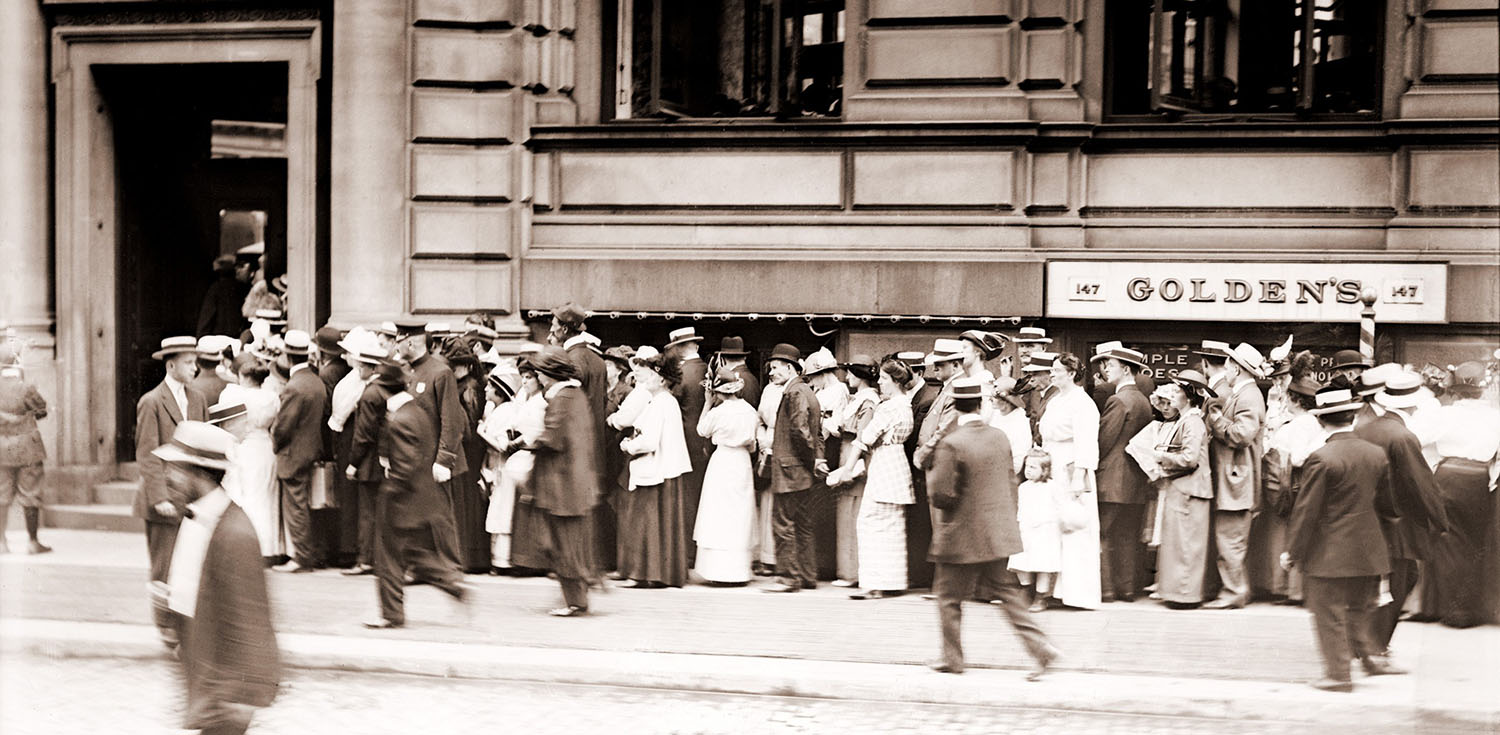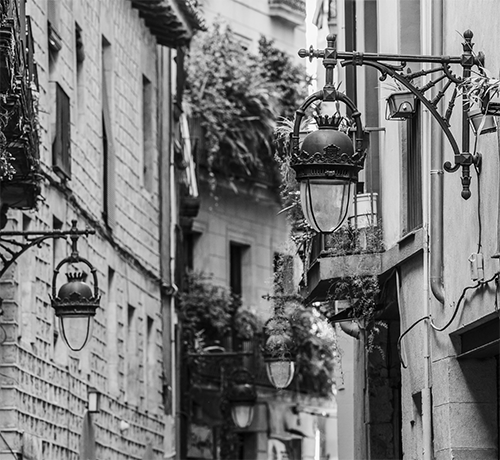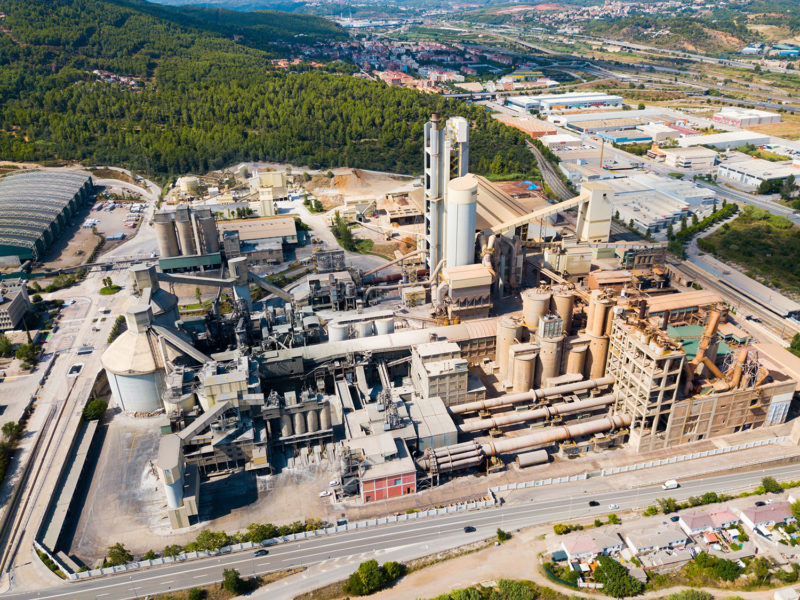

History of crises: the ancient world falls (1/2)
Ever since human beings abandoned nomadism to form sedentary societies, the emergence of social stratification, based on the accumulation of wealth, has been a reality. Since then, there have been alternating periods of prosperity and crisis. In this first part, we review with 11Onze agent and historian Oriol Garcia Farré the history of the great crises of the 17th, 18th and 19th centuries.
At the birth of incipient capitalism, crises arose mainly due to the expansion of markets, large commercial monopolies, the consumption of fashionable products and bad harvests caused by environmental changes. From the Tulip Crisis, to the South Sea Companies, to the Napoleonic Wars, problems of debt, depreciation, inflation and the consequent fall of political regimes emerged as they do today. How did they do it then? How did these crises bring down the ancient régime? The answers they found can help us understand our here and now.
1637: Why do tulips cost so much?
With the Union of Utrecht, the 17 United Provinces conspired to work together to get rid of the occupation of the Crown of Castile. This common struggle allowed them to experience an economic and commercial boom that led to one of the most golden periods in their history. The process of economic growth came to a head at the beginning of the 17th century, when the Dutch Republic became the world’s leading economic power. Was it possible to combine the Protestant ethic and the spirit of capitalism that emerged from the commercial monopolies of the Japanese seas?
Yes, and the Dutch painter Frans Hals portrayed it. The artist, considered the great Flemish portraitist of the 17th century, painted countless portraits for posterity for the Dutch wealthy classes, who were keen to record their good fortune. A clear example is his well-known painting ‘Portrait of a Couple’, which shows a married couple holding hands, a symbol of loyalty.
It was in this context of economic exuberance that tulips acquired an incomprehensible relevance, as they became the greatest expression of economic ostentation that could be displayed in public. To give you an idea, during the 1920s, a single tulip bulb could easily sell for 1,000 guilders, while the average Dutchman’s annual salary was 150 guilders. In other words, the average Dutchman had to work for almost ten years to buy an exotic tulip bulb.
This excessive exoticism led to a tulip-buying craze that lasted for years, leading to a massive financial crisis and the total collapse of the Dutch economic system from 6 February 1637 onwards. This tulip bubble that burst is perhaps reminiscent of the real estate bubble of 2008 and the cursed subprime mortgages.
1720: He who has a friend, has a treasure
If you are offered the opportunity to invest in a company and you are assured that it will bring you a lot of profit, you will probably think about it. Then you ask yourself the question: what exactly does this company produce to generate so much profit? In early 18th century England, many investors —small, large and very large— ignored the question. In fact, they did not even ask.
The quest to conquer new markets to increase the trade balances of the major European monarchies —Spanish, French and English— led to major continental wars. And all of them entailed extremely high economic costs for the public purse. As a result, they were forced to seek control of new overseas territories, mainly in the Americas, and world domination in general.
Debt issuance was one of the formulas used by states to finance their expansionist policies. In England in 1719, the South Sea Company was one of the many companies that purchased part of the debt. At the same time, the company issued shares to finance itself and with this money it bought back debt. However, unlike the other competitors, the South Sea Company won a crucial exclusivity deal by becoming the only English company with the power to trade directly with the Castilian Crown’s South American colonies.
This agreement caused the financial markets to be overwhelmed by a great buying euphoria for the company’s shares. Even so, we must not forget that this whole scheme —full of organised tricks— was orchestrated by the English state in order to finance itself. The curious fact is that this company was virtually never in business, but its shares rose by more than 1,000% in less than a year.
Yet when the euphoria wore off and share prices collapsed, there was a liquidity crisis, which spread throughout the British economy and triggered a crisis of biblical proportions. Thousands of investors lost everything, the government resigned en bloc, Parliament was dissolved and a management committee took over the running of the country. The representatives of the South Sea Company all ended up in the Tower of London. Finally, England entered a long and deep economic recession that lasted for decades.

“What happens when you start building the capital of the United States and more than 40% of the land is private? The North American Land Company brought about the defeat of the Atlantic credit network, and ended up accelerating the collapse of the system”
1797: Building a new capital
Gathered in Philadelphia, 55 representatives of the former American colonies set about drafting an innovative and revolutionary Magna Carta for the fledgling nation. The war was behind them and the future looked bright. The new constitution —rooted in the Enlightenment— was inspired by the principles of liberty and equality. That generation of Europeans who had grown up and struggled to implement the principles of reason in their societies looked to the revolutionary democratic and republican system of the newly born United States as the ultimate step towards modernity. Henceforth, all men would be equal by nature and before the law.
The American constitution called for the creation of a federal government, limited in its powers, but superior in the states, equipped with executive and judicial branches, and a bicameral legislative body: the Senate and the House of Representatives. And where were all these bodies to be located? Did a new capital have to be built for them?
Discussions to decide the location were long and tense, but in the end it was decided that it would be built on extensive land on the Potomac River in South Baltimore. The capital’s urban planning had to represent the spirit of the Enlightenment with grand avenues, roundabouts, extensive landscaping, and everything had to exude a neoclassical style. Still, what happens when you start building the capital and more than 40% of the land is private?
The North American Land Company intended, with the purchase of the plots of land, to sell them to European investors. However, this massive sale did not materialise, because Europe was too busy with Napoleon, the main cause of the monetary tension and the massive withdrawal of deposits from the main European banks. As a result, the North American Land Company gained access to the main European credit markets —English, French and Dutch— and caused the defeat of the Atlantic credit network, accelerating the collapse of the system and a major commercial slowdown.
1815: The world after Vienna
A figure on horseback emerged from the morning mists on the Prairie de la Rencontre near Grenoble. Addressing the army —which had come to arrest him for having escaped from the island of Elba— he shouted: “Soldiers, I am your emperor! Don’t you recognise me?”. A month and a half later, he entered Paris to shouts of “Long live the Emperor!”. History was ready to give Napoleon Bonaparte another chance.
The restoration of the French monarchy —and thus of the ancien régime— clashed squarely with the revolutionary spirit that Napoleon had been fighting for nearly two decades. It seemed that the two conceptions of power management were irreconcilable and had to be settled on the battlefield. Did Waterloo really mean the end of Bonaparte’s revolutionary dream?
The victors of Waterloo —Austria, Britain, Russia, Prussia and France— met in Vienna to restore the old pre-revolutionary order. Convinced to set things right, they soon realised that the Napoleonic wars had brought about radical and profound changes in Europe, as well as in other parts of the world. All efforts to reverse Napoleonic policies were unsuccessful.
Lasting almost 20 years, the subjugation of European countries under the French Empire allowed the introduction of many of the liberal features of the French Revolution: democracy, laws, the judicial process of the Cortes, the abolition of serfdom, the reduction of the power of the Catholic Church and the demand for limits on the powers of the monarchy. One of the most important legacies of Napoleonic expansion in Europe was the establishment of civil law and its institutions.

“Convinced of righting the situation, the victors of Waterloo soon realised that the Napoleonic wars had produced radical and profound changes in Europe and the world. All efforts to reverse them were unsuccessful”
1845: The gastronomic genocide of the potato
From the 12th century onwards, Ireland fell under the rule of England, which brought non-indigenous people to the island to settle as colonists. In the 14th century, the so-called Kilkenny Rules were imposed, banning intermarriage, the use of Gaelic and the customs of the country. Oliver Cromwell in the 17th century ordered the confiscation of land and other property from Irish Catholics, which could pass into the hands of English Protestant settlers, who alone could profit from the land.
Before the confiscation, the traditional Irish diet was based on cereals, meat, dairy products, vegetables and fruit. After the seizure, large quantities of produce —grain, livestock, dairy, poultry— began to leave Irish ports for England on a daily basis. As a result, the Irish were forced to maintain an all-potato, all-milk diet.
Suddenly, in 1845, a terrible blight caused by the fungus ‘Phytophthora infestans’ appeared in the potato plantations, which spread rapidly and fatally affected all potato crops. The blight triggered a terrible episode of famine throughout the Irish peasantry, and caused the death of over a million people. Meanwhile, the English Parliament took no action to help the Irish peasants: it only sent some 200,000 soldiers to Ireland to keep the commercial situation under control and prevent an uprising of the population. This ensured that tens of millions of cattle, tons of flour, grain, poultry and dairy products left the country.
Faced with such a dramatic situation – exacerbated by harsh winters – between 1845 and 1849, more than 1.5 million Irish decided to stop starving on the green steppes and emigrate to the New World.
1866: Fictitious returns
Technical studies showed that there was an abundance of coal in Ogassa, the village below the Taga, which allowed the area to be mined on a large scale. This extraction made it necessary to build a modern network to transport the material at low cost to Barcelona to power the modern steam engines of the incipient textile industry. For this reason, a large amount of economic resources —both public and private— were allocated to the construction of the Catalan railway network. The aim of this infrastructure was to achieve a more competitive and diversified industry.
The Monarchy quickly jumped on the bandwagon of territorial development for the whole of Spain. And history has taught us that the construction of a major new infrastructure on a national scale requires a lot of economic resources. A great deal. That is why the state financial system had to be reformed by means of two important laws: the Law on Banks of Issue and the Law on Credit Societies.
But the financial mechanisms that had made the great expansion of the decade possible hit rock bottom in 1866 with the crash of the Barcelona Stock Exchange. To put it very simply, there were three reasons for this.
The first was the progressive accumulation of losses by the main creditor companies —such as Catalana General de Crèdit, for example, which was heavily involved in railway construction and operation— which showed that it would be impossible to recover all the investments made. Secondly, the intense participation of the company in the railway business, both in the form of shares and bonds in the portfolio and in guaranteed loans, which would be affected by a drastic fall in its share price. And thirdly, the disproportionate increase in interest rates, with the inevitable effects on the entire financial system. All this would eventually drain all the economic resources accumulated over decades.

“The ‘rabassaires’ had to choose: lose most of their ancient land rights or emigrate to the city and become cheap labour for the modern textile factories”
1879: The death of the vineyards
The Arbitral Sentence of Guadalupe, at the end of the 15th century, put an end to the question of the ‘remense’ in Catalonia. One of its consequences was on land ownership, which was gradually broken up. The large estates were parcelled out under a regime of emphyteusis, similar to a lease, by means of a ‘rabassa’ —or dead stock— contract. The purpose of this legal instrument was to transfer to the peasant some barren, i.e. unworked, land so that he could plant vines and work the vineyard while the vines he had planted were still alive. In this way, the peasant became the usufructuary of the land he cultivated, in exchange for paying an annual census to the landowner.
Throughout the 18th and 19th centuries, the main wine-producing regions of Catalonia increased their agricultural production exponentially, due to strong market demand. This led to a spectacular increase in the exploitation of new land, with the consequent need for an abundant workforce and, in the long run, a demographic increase. In the 1980s, Catalonia experienced the golden age of viticulture, while France was infected by phylloxera.
This American insect attacked the roots of the vines and slowly killed them, which explains its slow territorial spread. However, phylloxera broke out in Catalonia in the Empordà in 1879. In 1893 it reached the Penedès, where in eight years it devastated up to 385,000 hectares of vines. And in 1899 it reached Terra Alta.
Blinded by profits, that generation only thought in the short term. They did not even consider the possibility that phylloxera would affect them, much less that the farmers would have to uproot the vines and, even less, spend some time without producing. And if the vines died, what would happen to the dead ‘rabassa’ contracts? The situation became complicated. Very complicated.
First of all, 99% of European vines —‘Vitis vinifera’— were replaced by American vines —‘Vitis rotundifolia’—, as they are much more resistant to phylloxera. Secondly, the landowners considered the dead ‘rabassa’ contracts to be broken with the death of the vines, despite the fact that the ‘rabassaires’ asked for the renewal of the contracts due to the exceptional nature of the situation. Given the increase in conflict, the options went in two directions: that the former ‘rabassaires’ were sharecroppers, which meant losing most of their former land rights, or emigrating to the city, and becoming cheap labour for the modern textile factories.
11Onze is the community fintech of Catalonia. Open an account by downloading the super app El Canut for Android or iOS and join the revolution!





Molt interessants les crisi que has analitzat! Algunes m’han semblat ben curioses…a veure amb què ens sorprens a la segona part!
Gràcies, Cristina! La història està plena de curiositats diabòliques! La segona part hem treballat crisis més conegudes i molt més estudiades per proximitat temporal. Seguim a La Plaça!
Moltes gràcies pel teu comentari, Cristina! Celebrem que t’agradi!
Molt interessant.
Gràcies, Manuel per seguir-nos i llegir-nos! Ens veiem per La Plaça!
Moltes gràcies, Manuel, ens veiem per la Plaça!
Molt interessant la història. No aprenem, repetim i repetim errors. Cobdícia, odis, incompetència ….. Fins quan. Gràcies.
Totalment d’acord, Pere! Malgrat tot, s’ha de treballar per revertir la situació i, això passa per una educació financera de la societat per tal que els pillos no ens ensarronin! Ens veiem per La Plaça.
Molt interessant, tot i que es demostra que mai aprenem rès de les errades del passat 🥴🥴🥴
Correcte, Santiago! No aprenem. Seguim a La Plaça!
Ok 👍
Gràcies, Josep per llegir-nos. Seguim a La Plaça!
Gràcies Oriol fas que l’h8storia es visqui com si fos ara,la sobreexplotacio i acumulacio juntament amb mala gestió diria que son els punts comuns d’aquestes crisis
L’ambició desmesurada. Si les coses les féssim amb mesura seria bo, però quin és el límit de la mesura? Seguim a La Plaça.
La mena d’història que cal saber per entendre el món. En diferents contextos gairebé tot es va repetint, no escarmentem.
Crisi per estirar més el braç que la màniga.
Crisi Per creure que regalen duros a 4 pessetes.
Crisi per no veure a venir el que ja està venint (Filoxera, Els pagesos no s’informaven com ara)
Crisi cruel: La de la patata, és un capítol apart.
Gràcies, Oriol.
Diuen Mercè, que l’home és l’únic animal que ensopega dues vegades amb la mateixa pedra! Seguim sense aprendre del passat. Seguim a La Plaça!
👏
Gràcies, Daniela per llegir-nos i seguir-nos! Ens veiem per La Plaça.
Gràcies per seguir-nos, Daniela. Ens continuem veient a La Plaça!💛
👌
Gràcies, Joan. Ens veiem per La Plaça!
Gràcies, Joan!😉